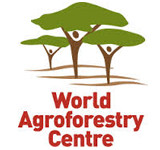
Vigyan Bhavan & Kempinski Ambience
10 - 14 February 2014
Delhi, India
blog
In rural Malawi, when people get infected with HIV, they increasingly rely on forest resources for medicines and fruits. How can agroforestry take the pressure off forests?
“Agroforestry can provide HIV-AIDS-affected people with some of their most basic needs such as firewood, traditional medicines and fruits,” says Joleen Timko, a researcher from the University of British Columbia.
In Malawi, which has a predominantly rural population that depends on forests for food and fuel, an estimated 10.8 per cent of the adult population is living with HIV/AIDS.
Forest resources in the country are already depleted. “If these resources are further depleted, those affected by HIV-AIDS could suffer immensely from decreased stamina, increased vulnerability to further infections and other diseases, and greater food insecurity,” says Timko.
Timko has been researching how the disease has impacted on forest resources in Malawi.
“In different phases of the disease, affected people’s dependence on forest resources changes,” she explains. “For example, when people are sick (known as the morbidity phase) they rely heavily on medicinal plants to treat side effects of HIV-AIDS such as shingles and diarrhea.”
“Medicinal plants are so depleted now in the forests of Malawi, that people are collecting these from the forests of nearby Zambia and Mozambique.”
During this morbidity phase, people also increase their use of wild fruits and honey to improve their health and detoxify the effects of AIDS-related drug treatments. Fruits may also be in higher demand at this time because people at this stage lack the energy to collect firewood that is required to cook other foods.
HIV/AIDS sufferers also rely more on bushmeat for alternative income when they are sick.
Following AIDS-related deaths, households increase their use of timber to build coffins, for funerals and ceremonies. Forest lands are also being converted to cemeteries.
Timko asked local people in Malawi about how agroforestry could help to alleviate some of the burden HIV/AIDS places on them.
Among the interventions they mentioned were domesticating medicinal and fruit trees, planting fast-growing trees for firewood and creating community herbaria for traditional medicines. They would also like to see training provided on sustainable harvesting of medicinal plants as well as on honey production for food, medicine and income generation.
Agroforestry could go a long way towards protecting the forest resources of Malawi and providing important resources that HIV-AIDS-affected communities desperately need.
By Kate Langford







One Person has left comments on this post
Hi:
I like the short report. It is vague but gives the essence of the concer (now that is a statement). I would like to send this to some local reporters that may be interested in this topic. OK? L Dad